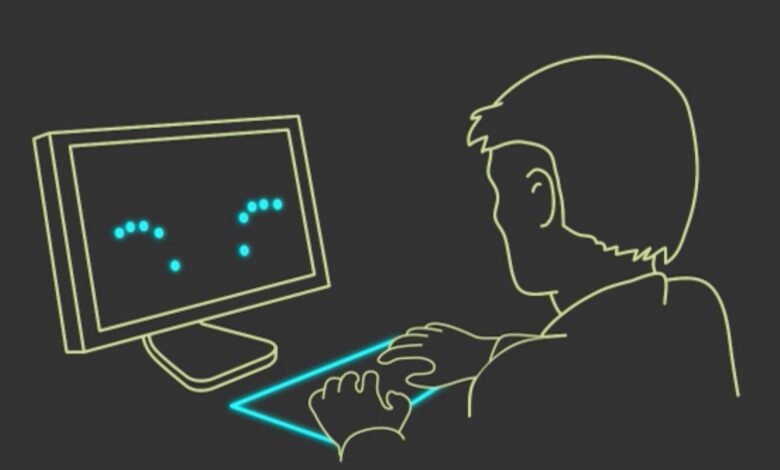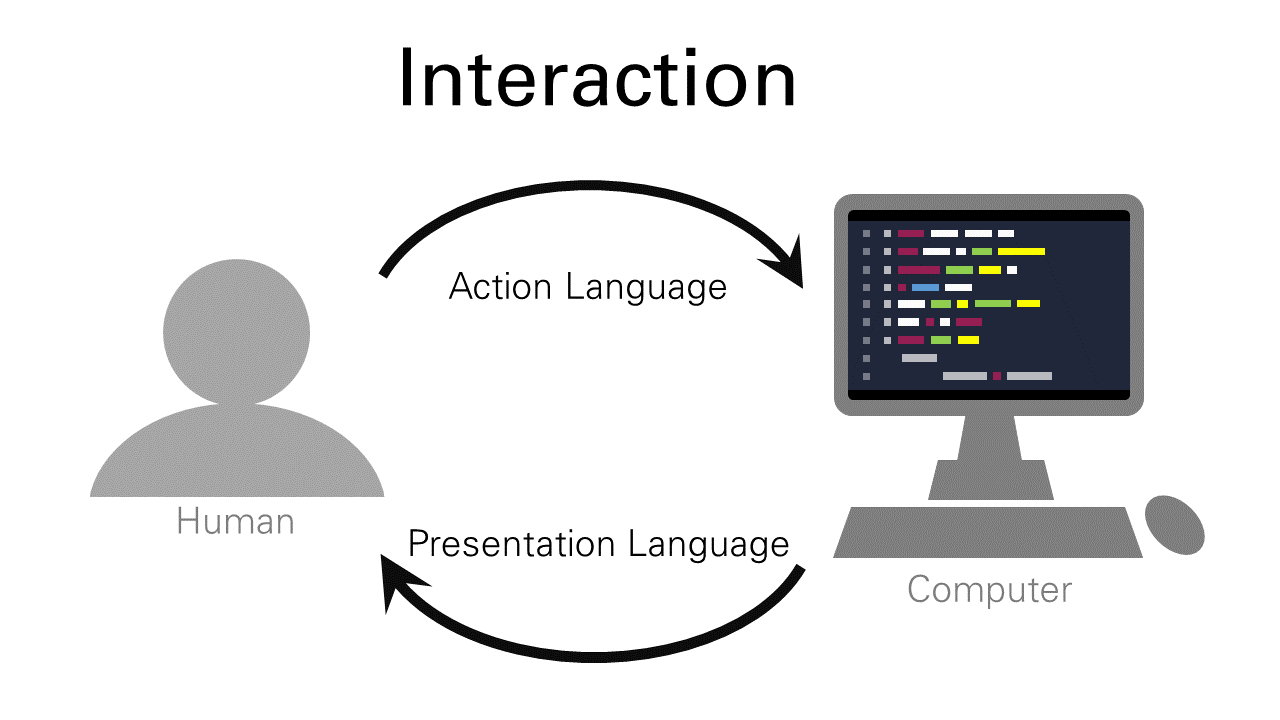
Human-computer interaction (HCI) often tests specialized inventions and human engagement regulations. Today, we’ll explore the fundamental assignment of the International Journal of Human-Computer Interaction (IJHCI) in suggesting this passionate work.
What Is Human-Computer Interaction?
Human-computer interaction analyses the association between individuals and technology. It’s not just about computer traps and keyboards; it’s about apprehending how humans interact with various digital techniques, from smartphones to artificial intelligence. HCI holds multiple professions, including computer science, intellect psychology, layout, and ergonomics. The highest goal? To make technology more intuitive, reasonable, and practical for everyone.

Human-Computer Interaction
The Journal of Human-Computers has lived a manner of the HCI profession since its beginning in 1989. As one of the educated journals in HCI, it allows researchers, scholars, and practitioners to share their details, comments, and breakthroughs. The journal has recreated an essential part in shaping the direction of HCI analysis and encouraging a community of professionals dedicated to improving how we interact with technology.
Key Contributions of the IJHCI
Over the years, the IJHCI has greatly assisted the HCI field. It publishes various research articles, from academic analyses to practical matter studies. Here are some of the key areas where the journal has made a considerable effect:
User Interface Design: The journal’s studies focused on creating more user-friendly interfaces. These analyses often explore how optical design, layout, and user experience can be optimized to make technology more available.

Human Factors and Ergonomics: This area of HCI examines the physical aspects of technology use, such as ergonomics, comfort, and safety. The IJHCI has published groundbreaking research on developing devices that relieve pressure and control injury.

Cognitive Psychology and HCI: The journal explores the mental processes involved in technology interaction. Learning how users process information and assemble findings is crucial for developing useful interfaces.

The Progress Field of Human-Computer Interaction
HCI is an ever-changing field pushed by technological advances and modifications in user techniques. The IJHCI has been documenting these modifications and guiding the development of HCI. The periodical has published analysis on a mixture of emerging topics, including:
Artificial Intelligence and Machine Learning: As AI becomes more integrated into our daily lives, the IJHCI explores how it impacts human-computer interaction. It contains studies on uncultivated language processing, AI-driven interfaces, and creative virtual associates.

Augmented and Virtual Reality: The rise of AR and VR has opened new possibilities for HCI. The journal examines how these technologies can construct immersive adventures while preserving user security and mitigation.

Ethics in HCI: With technology’s increasing role in society, ethical considerations are more important than ever. The IJHCI promotes research on ethical problems such as data privacy, support, and the impact of AI on employment and social dynamics.

The Importance of the IJHCI in Today’s World
Where technology is evolving and incorporated into every element of our lives, the IJHCI is essential in increasing HCI understanding. Its research helps guide the design and evolution of more user-friendly, honorable, and useful technology. By developing an assembly of researchers and practitioners, the journal provides that the field continues to grow and evolve in designs that benefit the association.
The Early Days of Human-Computer Interaction
HCI appeared as a field in the late 1970s and before the 1980s, when unique computers formed to penetrate the mainstream. Since then, exchanges with computers have frequently been specified to text-based interfaces, requiring users to type commands to accomplish things. It was an outlier from the intuitive, user-friendly interfaces we have today.
In those early days, HCI focused on making technology accessible to the average person. Researchers explored simplifying interfaces, introducing graphical elements, and improving usability. It applied the foundation for the graphical user interfaces (GUIs) that would soon become common in computing.

The Shift to Graphical User Interfaces
Graphical user interfaces (GUIs) celebrated a consequential landmark in the growth of HCI. With GUIs, users could interact with computers via icons, windows, and menus, preferably compared to complicated management rows. This shift made technology more approachable and extended the entrance to a broader capacity of users.
The development of the mouse as an input device further improved the usability of computers. Rather than depending exclusively on keyboards, users could point, connect, and extract, leading to a more intuitive exchange with technology. This era also saw the height of user-centered design, where the focus went from what technology could do to how it could satisfy users’ requirements and anticipations.

The Rise of Mobile and Touch Interfaces
As technology persisted and increased, so did the field of HCI. The advancement of mobile appliances in the early 2000s brought new challenges and opportunities. Touch interfaces became a major guide, with smartphones and tablets redefining how we interact with technology. The capacity to appropriate, pinch, and faucet changed the game, making the technology more convenient and intuitive.
With the increase in mobile devices, HCI researchers started to explore new ways to optimize user experiences for shorter screens and touch-based exchanges. It contained everything from developing user-friendly mobile apps to creating responsive web layouts that adjust to different screen sizes. The power of mobility and flexibility became a clarifying element of stylish HCI.

Future Trends in Human-Computer Interaction
The future of HCI is supplied with compelling possibilities. Here are some sensations that include the prospect of shaping the field in the future years:
Augmented Reality (AR) and Virtual Reality (VR): AR and VR have developed new borders in HCI, authorizing users to interact with digital essentials via stunning methods. These technologies have applications in gaming, instruction, and authentic secluded positions.

Wearable Technology: Wearables like smartwatches and fitness trackers are changing how we monitor our health and interact with technology. HCI analysis concentrates on making wearables more satisfying and intuitive and connecting them with other gadgets.

Voice and Gesture Recognition: Voice recognition has gained popularity with virtual assistants, but gesture recognition is also on the rise. HCI researchers are examining how to improve these technologies to assemble more natural and ideal interchanges.

Ethics and Privacy: As HCI becomes more sophisticated, ethical considerations become increasingly important. Experimenters are addressing problems associated with customer privacy, data protection, and the ethical usage of AI to ensure that technology is utilized amenable.

Popular Research Topics in Human-Computer Interaction
International Journal of Human-Computer Interaction (HCI) is a varying and quickly developing discipline with multiple cases, from typical user interface techniques to appearing technologies such as virtual reality and artificial intelligence. In this guide, we’ll analyze some of the numerous prevalent research matters in HCI and discuss why they are appropriate in today’s technology-driven world.
Applications of HCI
Human-computer interaction (HCI) is more than just an educational field; it affects our daily technology exchanges. HCI’s applications range from unique gadgets to great-scale industrial techniques. Here’s a look at some of the considerable applications of HCI and how they shape our customary commerce with technology.

Everyday Consumer Technology: Smartphones, Tablets, and Beyond
The multiple apparent applications of HCI are in the client technology we use daily. Smartphones and tablets have reorganized how we express, work, and entertain ourselves. HCI analysis has been essential in making these appliances user-friendly and intuitive. Touchscreen technology, motion management, and voice awards result from HCI research, which focuses on creating ideal interactions with technology.
The development of smartphone connections over the years is a testament to HCI’s effect. From the earlier days of text-based management to the existing multi-touch gestures and virtual associates, HCI has continuously improved the user experience. This movement is anticipated to continue, with advances like foldable screens and expanded actuality on the horizon.

Conclusion
Human-computer interaction (HCI) is a growing field that affects our daily dynamism. The International Journal of Human-Computer Interaction is necessary for researchers and specialists, delivering an outlet for communicating understandings and discoveries. As technology advances, HCI will play a progressively significant role in shaping the future.
Integrating Google NLP into HCI analysis has extended new possibilities, allowing for more slight analysis and knowledge of user behavior. Despite the challenges, the specialization is balanced for persistent development and innovation. By managing ethical concerns and concentrating on user requirements, HCI experts can design technology that improves our dynamism without coming to terms with our values.








